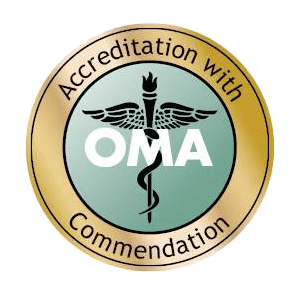COOS BAY — A blistered toe is an annoyance to most people. For a diabetic, it may foreshadow a long battle to heal a persistent sore – potentially leading to leg amputation.
Diabetic ulcers, a common condition on the South Coast, are a key reason Bay Area Hospital has begun offering hyperbaric wound therapy.
“If you’re a diabetic with a lower-extremity ulcer and it becomes chronic, this may be the only way to save your leg” said Dr. Terrance Bach.
In hyperbaric therapy, the patient lies in a sealed chamber, breathing pure oxygen that is pressurized to as much as three times normal air pressure. The resulting oxygen-enriched blood promotes healing.
Two hyperbaric chambers were installed in January. Since then, the hospital has recruited local physicians to oversee the program, and the physicians and other hospital employees have undergone extensive training.
The first patient began treatment in May. Four patients have undergone treatment so far, and several more are waiting to begin.
“They’ve been very excited with the possibility of healing their wounds,” said Registered Nurse Dustina Jacque, the hospital’s program manager for wound care. Hospital staff members are equally pleased to be using the twin chambers.
“Watching the wounds get smaller and smaller has been quite exciting,” she said.
A hyperbaric chamber is a transparent cylinder pumped full of pure, pressurized oxygen. It can triple a patient’s oxygen intake, producing oxygen-rich blood that promotes healing.
Although diabetes is the most common reason for patients to need hyperbaric therapy, the chambers can help treat many conditions. The first two beneficiaries of the new chambers were cancer patients.
The two chambers are the centerpiece of an enhanced Wound Clinic at Bay Area Hospital. The clinic opened in January, replacing a makeshift program that had grown up to meet an unexpected need.
Jacque said the original wound care program began as an informal offshoot of the hospital’s physical therapy services. Lacking a hyperbaric chamber, nurses used a variety of more conventional therapies to treat unhealed wounds. Word spread rapidly, and local physicians eagerly began referring patients for treatment.
Within six months, the ad hoc program had grown from 34 patient visits per month to more than 300, highlighting an unmet demand for wound care. Adding hyperbaric chambers to the toolkit was the natural next step.
Bay Area Hospital’s two Sechrist chambers dramatically enhances the hospital’s wound care capability.
Before Bay Area Hospital began offering hyperbaric wound care, a patient seeking hyperbaric therapy would have had to travel to Eugene. Because the treatment requires daily sessions for several weeks, that option was impractical for many patients.
###
About Hyperbaric Therapy
Not for publication — Hyperbaric therapy works by stimulating formation of tiny blood vessels — a process called “angiogenesis.”
Effective but boring — The patient lies in a transparent acrylic cylinder two hours a day, five days a week, for as long as three months, breathing pure, pressurized oxygen. Because pure oxygen is flammable, the patient can’t take anything inside. A television hangs above the chamber, but an attendant outside handles the remote.
Into the deep — Each treatment session is called a “dive,” because the pressurized chamber is reminiscent of a submarine.
World class — Dr. Thomas Serena, the consultant who trained local physicians on hyperbaric therapy, said the equipment and treatment at Bay Area Hospital are on par with the best hyperbaric treatment anywhere. One of Serena’s other clients is Hackensack University Medical Center, ranked as America’s fourth-largest hospital and one of the best.
“This center will run the same as that center,” Serena said.
Versatility — The chambers and physicians at Bay Area Hospitals are currently equipped to treat:
- Wounds that won’t heal.
- Crush injuries.
- Gangrene.
- Skin or bone infection that causes tissue death.
- Radiation injuries.
- Burns.
- Skin grafts or skin flaps at risk of tissue death.
- Osteomyelitis.
###
Note to journalists: The hyperbaric chambers are not available for photography. We advise using still photos and/or B-roll from our January open house.














